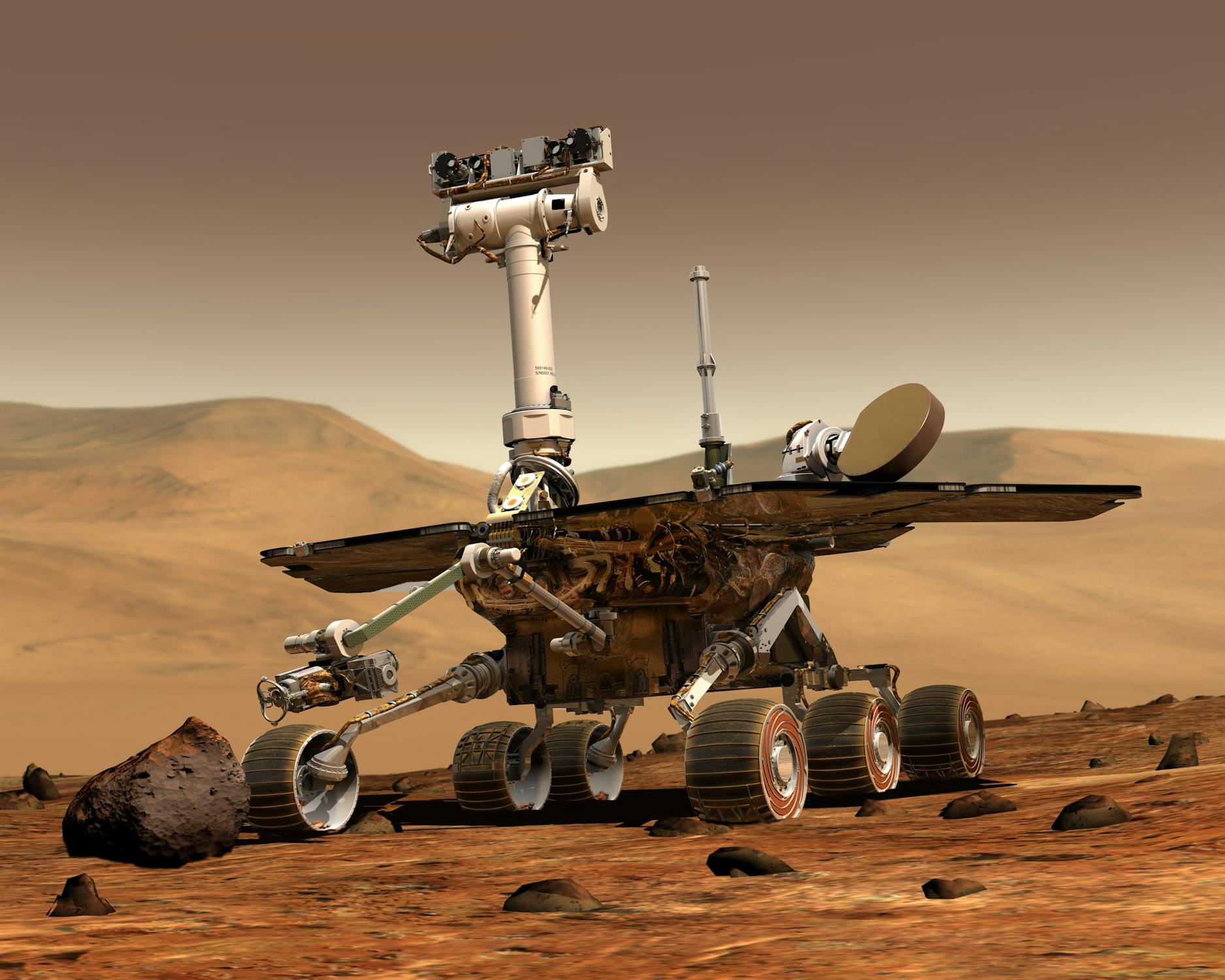The Invisible Revolution
How Carbon Nanotubes Are Powering NASA's Quest and Transforming Life on Earth
Article Navigation
The Cosmic Significance of Carbon Nanotubes

Imagine a material so dark it can swallow starlight, so strong it could tether a spacecraft to Earth, and so versatile it can detect diseases in your breath. This isn't science fiction—it's the reality of carbon nanotubes (CNTs), cylindrical structures of carbon atoms arranged in hexagons, 80,000 times thinner than a human hair.
Born from the marriage of nanotechnology and materials science, CNTs represent a paradigm shift in engineering, offering unparalleled strength, electrical conductivity, and thermal stability.
The Atomic Marvel: Understanding Carbon Nanotubes
Structure Defines Superpowers
Carbon nanotubes are essentially graphene sheets rolled into seamless cylinders. This atomic arrangement unlocks extraordinary properties:
- Mechanical Strength: With a tensile strength reaching 63 GPa, CNTs are ~100 times stronger than steel at just one-sixth the weight 8 .
- Light Absorption: Their vertically aligned "forests" are 99% empty space, trapping light so effectively that they reflect only 0.005% of visible light 1 .
- Electrical & Thermal Conductivity: Electrons zip through nanotubes with minimal resistance, rivaling copper, while their thermal conductivity outperforms diamonds 4 8 .
Nanoscale Visualization

Animated visualization of carbon nanotube atomic structure showing the hexagonal carbon arrangement.
The Chirality Challenge
A nanotube's behavior—whether metallic or semiconducting—depends on its chiral angle (how the graphene lattice twists when rolled).
Recent advances use polyoxometalate catalysts to achieve >90% semiconducting purity, essential for nanoelectronics 4 . Computational models now simulate chirality evolution atom-by-atom .

NASA's Cosmic Toolkit: CNTs in Action
Starlight Suppression for Planet Hunting
Finding an Earth-like exoplanet is like spotting a firefly beside a lighthouse. NASA's upcoming Habitable Worlds Observatory (HWO) relies on CNTs to solve this.

Surviving the Lunar Night
Moon habitats face temperature swings of 300°C. NASA experiments with CNT-reinforced lunar concrete:
Featured Experiment: Water Mining on the Moon with CNTs
The Problem
Lunar water is trapped in soil or used in construction. Extracting it efficiently is critical for life support and fuel production.
Methodology: Microwave-Assisted Liberation
NASA-funded researchers tested a novel water-recovery system:
Results: CNTs as Microwave Antennas
| Parameter | With CNTs | Without CNTs |
|---|---|---|
| Water Yield | 3.5 g/3 samples | <0.5 g |
| Extraction Time | 7 minutes | >30 minutes |
| Structural Integrity | No spalling | Severe cracks |
CNTs acted as nano-antennas, converting microwave energy into heat that liberated water without fracturing the geopolymer 3 .
Implications
This experiment proves CNTs enable:
- Rapid water recycling for life support.
- Stable in situ construction—critical for Artemis bases.
Data Spotlight: CNTs by the Numbers
Mechanical Performance of NASA's CNT Composites
| Material | Density (g/cm³) | Tensile Strength (GPa) | Mass Savings vs. Aluminum |
|---|---|---|---|
| Aluminum | 2.7 | 0.3 | Baseline |
| Carbon Fiber Composite | 1.8 | 1.5 | 25% |
| CNT Yarn Composite | 1.3 | 3.8 | 50% |
Source: NASA SAC Project 5
Global CNT Market Forecast (Key Sectors)
| Application | 2025 Demand (tons) | 2035 Projected (tons) | Growth Driver |
|---|---|---|---|
| Lithium-Ion Batteries | 12,000 | 98,000 | Electric vehicles |
| Aerospace Composites | 500 | 8,500 | Lightweighting |
| Electronics | 300 | 4,200 | Semiconducting SWCNTs |
Source: IDTechEx Report 2025 2
The Scientist's Toolkit: Key Reagents for Space-Grade CNTs
| Reagent/Material | Function | Example in NASA Research |
|---|---|---|
| Cobalt-Molybdenum Catalyst | Seeds SWCNT growth; controls chirality | Used in semiconducting nanotube arrays for sensors 4 |
| Lunar Regolith Simulant (CSM-LHT-1) | Mimics Moon soil composition (silica/alumina) | Base material for geopolymer concrete 3 |
| Dielectric Mirror Coatings | Survives 1,380°C CNT growth temperatures | Enables patterned growth on HWO mirrors 1 |
| Argon/Hydrogen/Ethylene Gas Mix | Feedstock for chemical vapor deposition (CVD) | Grows "nanotube forests" on apodizers 1 |
| Boron Nitride Nanotubes (BNNTs) | Neutron absorption for radiation shielding | Spacesuit fabrics blocking cosmic rays 8 |
Beyond Space: Societal Applications on Earth
Energy Revolution
- Batteries: MWCNTs in lithium-ion cathodes boost conductivity, enabling 500-mile EV ranges. Market to grow 8x by 2035 2 .
- Supercapacitors: CNT electrodes charge in seconds, ideal for grid storage.
Smart Infrastructure
- Self-Heating Concrete: CNT networks melt ice via electrical current, eliminating road salt.
- Earthquake-Resistant Buildings: CNT-Polymer composites flex without fracturing.


Behind the Scenes: The Future of CNT Innovation
Chirality Control Breakthroughs
MIT's multiscale models combine machine learning with molecular dynamics to predict:
- Catalyst dynamics (e.g., cobalt particle melting points) .
- Optimal CVD conditions for 99% semiconducting SWCNTs 4 .
NASA's 2040 Vision
- Mars Habitat Printing: CNT-geopolymer inks for radiation-shielded domes.
- Zero-Power Radiators: CNT films dissipate heat in vacuums without energy.
- Quantum Processors: Ultra-pure SWCNTs for space-based computing.
Conclusion: From the Cosmos to Our Kitchens
Carbon nanotubes embody a rare convergence: a material equally transformative for exploring the universe and improving life on Earth. They empower NASA to detect alien biospheres, build lunar bases, and shield astronauts, while on Earth, they redefine energy storage, medicine, and sustainable infrastructure.
As chirality control and mass production hurdles fall—accelerated by AI-driven synthesis—CNTs will cease to be laboratory curiosities. They will become as ubiquitous as silicon once was, invisibly woven into the fabric of our cosmic ambitions and daily existence.
The nanotube revolution isn't coming; it's already here, quietly reshaping the future in laboratories, factories, and the void between stars.
"NASA's work on carbon nanotubes shows how space technology doesn't just explore new worlds—it improves our own."